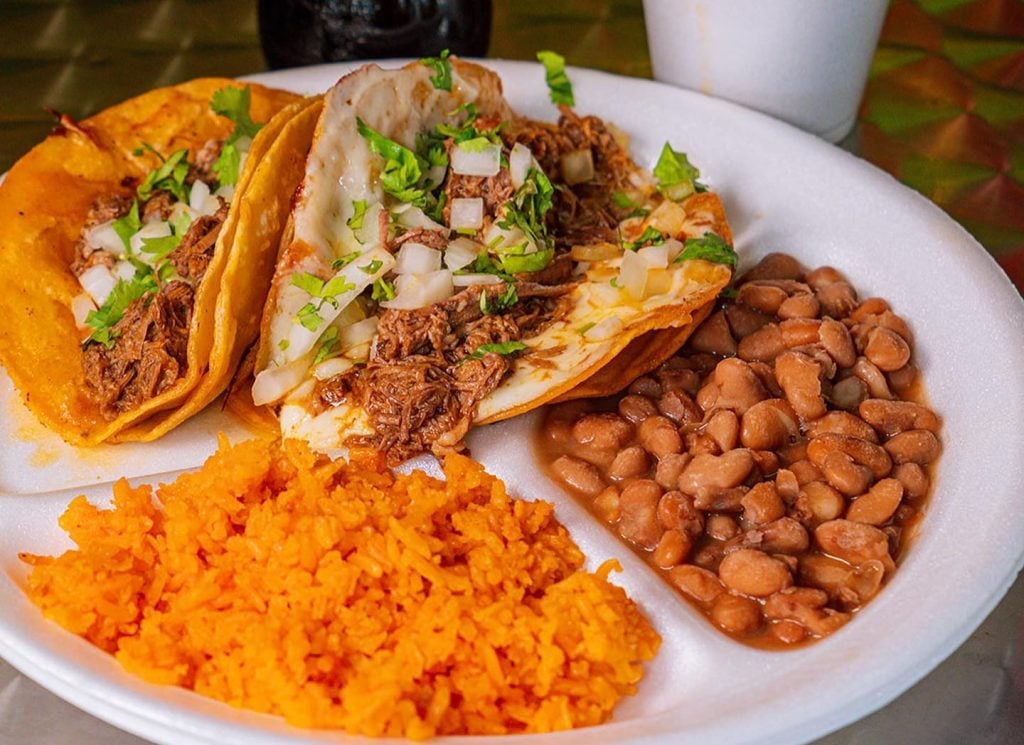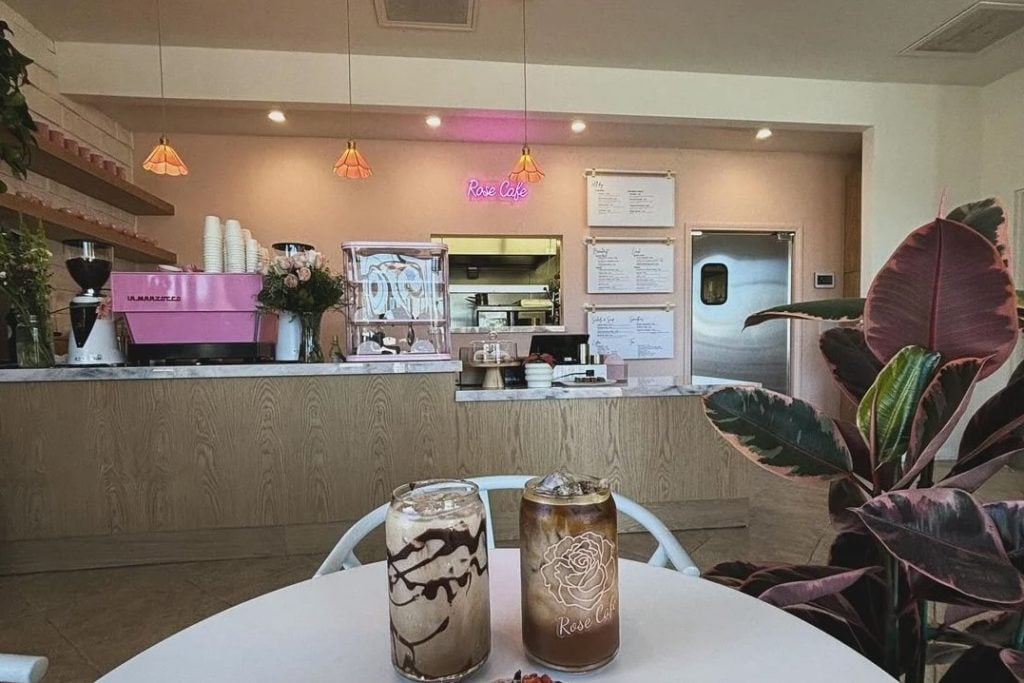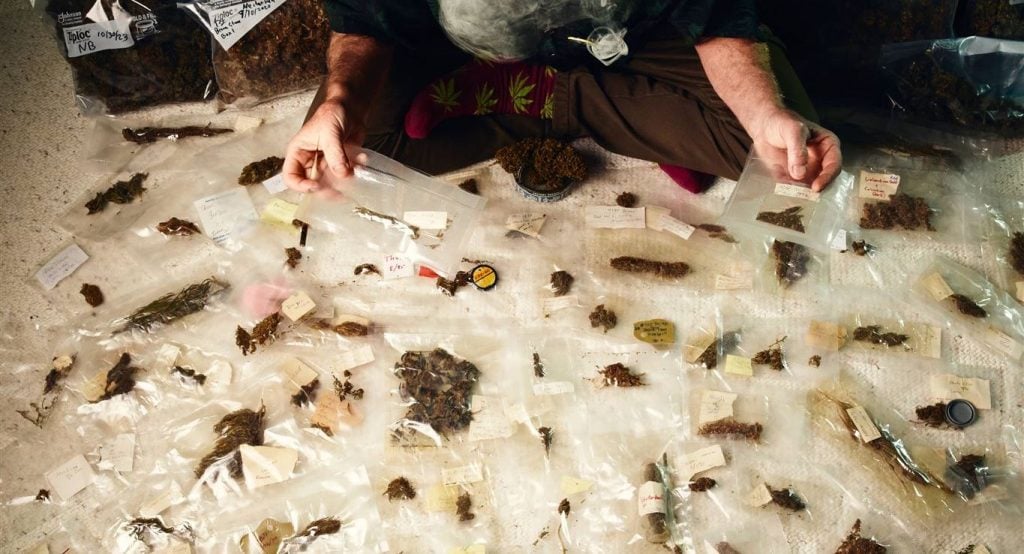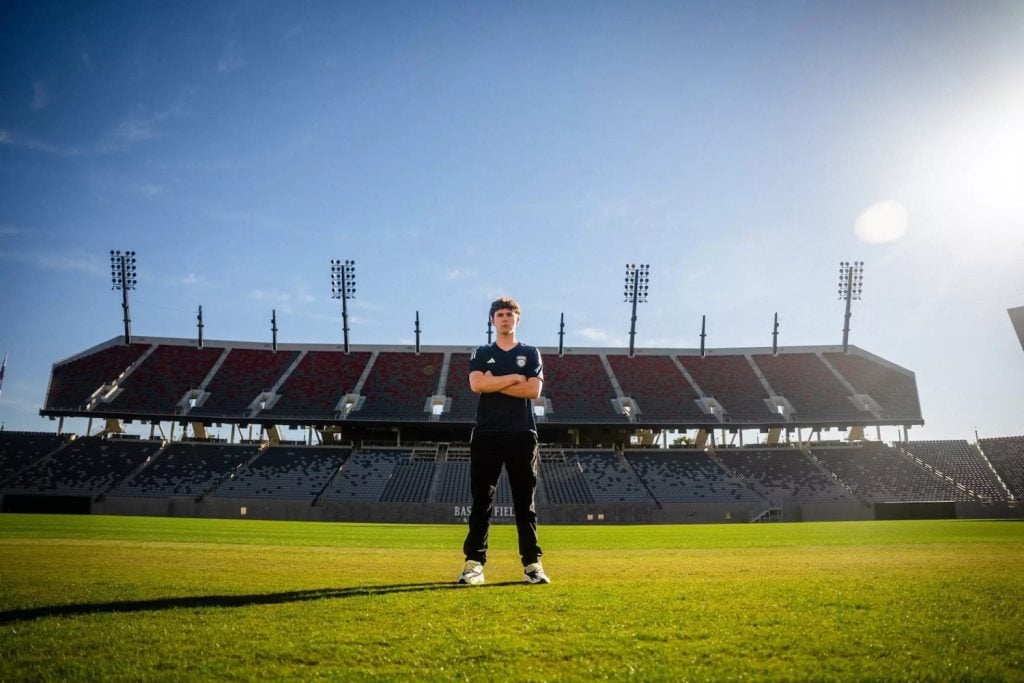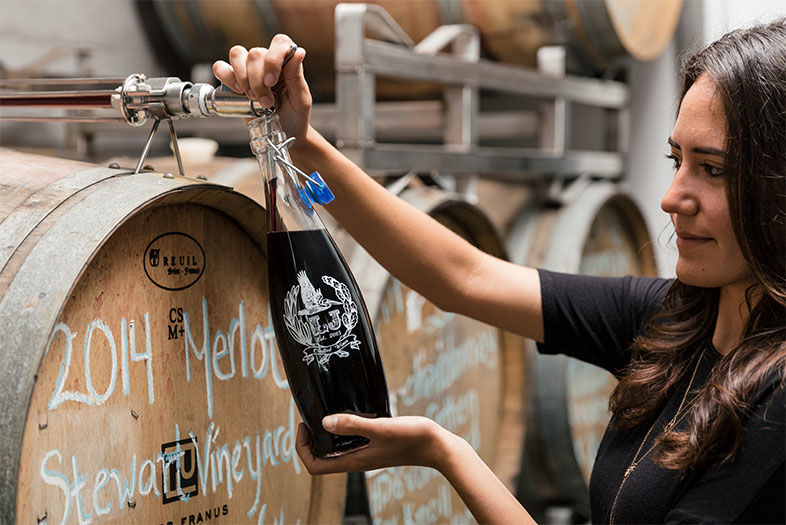Every time a wine drinker empties their recycling, the clank clank clank is basically the soundtrack of their carbon footprint. Wine bottles won’t win any environmental awards. And that’s at odds with the people who grow grapes and make wine, often farmers who are intimately connected to the health of their surrounding grape earth.
In La Jolla, a fourth generation wine professional is doing something about that and changing the wine-tasting game a bit. Inspired by two emerging trends in craft beer—serving from of the barrel, and refillable growlers—Lowell Jooste invented a device that allows high-end wine to be served directly out of the barrel without being tainted by oxygen. He’s currently serving over 10 varietals—made by one of Napa Valley’s first female winemakers, Alison Green-Doran—straight from the barrel at LJ Crafted Wines in Bird Rock.
The patent for his invention, called The Wine Steward, is pending. For months he was reluctant to talk about it until trials proved the wine stayed top-notch from first pour to last. Now that he’s been through 30 test barrels, he knows it’s ready.
Lowell and his wife Anne have quite the pedigree in wine, spanning generations of viticulture in South Africa. His family was responsible for bringing back South African vineyard, Klein Constantia—a legendary 17th and 18th century winery whose juice was drank and mentioned by Jane Austen and by Charles Dickens, to name a few. He sold everything in South Africa in 2011, and moved to La Jolla to be near their son, who attended USD.
When he sold Constantia, his last batch of wine was maturing in barrels, including the 2009 Vin de Constance. Last year, that wine was named No. 10 on Wine Spectator’s “Top 100 Wines in 2015.” (Lowell gives credit to the new owners, but admits he had a hand in that wine). Previous Lowell wines received mid-90s scores from Wine Spectator and The Wine Advocate.
Here he explains his history, his invention, and why wine from the barrel is better.
Tell me about your experience in wine.
I was fourth generation winemaker in South Africa. In 1980, my family bought a historically famous vineyard, Klein Constantia. It was me and my father at that time building it up from scratch. We worked a lot on recreating a historically famous wine from the Southern Hemisphere. Wines that had been enjoyed by John Adams, some Islamic princes in Indonesia, Charles Dickens, Napoleon. We sold everything in 2011 in South Africa. My wife and I and four kids decided to come on another adventure. We came to La Jolla.
You went to America’s wine university, correct?
In the late 80s, I was a winemaking student at UC Davis. I worked at Robert Mondavi in Napa. In those days, it was still a family operation. It was an incredible place to work. Everyone had this attitude that, ‘If it’s possible, we can do it. We can do anything.’ I was more on the experimental side. I spoke to the guy in charge of the research. I said, ‘Everything here seems to be an experiment.’ And he said, ‘That’s right, this whole place is an experiment.’
Why La Jolla?
My grandfather studied at the University of Minnesota in 1910. His best friend was from Southern California. They went to WWI together. Our families have been friends for over 100 years. Our eldest son got into USD, and we’ve been here four years. So we had to focus on somewhere and La Jolla had similarities and easily adapted.
What quality grapes are you buying to make your wines?
The top end grapes have become shorter and shorter supply, but in the end, the wine can’t be better than your grapes, and I’m not really interested in doing anything from the mediocre side. So we buy grapes from a number of vineyards, and focus on buying grapes where those particular varieties have excelled. Pinot Noir and Chardonnay from Russian River, Cabernet from Napa, Zinfandel from Wooden Valley.
Why Alison Green-Doran as your winemaker?
To be honest, I’ve never worked with a winemaker who’s so much like a farmer. She can walk into a vineyard, look at the land, and tell what a grower needs to do. She’s done 41 harvests, and I believe she was the fourth female winemaker in America who was paid to make wines. The first thing is to be able to get the very top end grapes, and Alison can do that. As the wine develops on its own, you want to show the vineyard in the wine. The winemaker is really like a midwife. You really want to show the vineyard, and she’s been fantastic.
Tell me about the Wine Steward.
I think the idea came from the frustration as a winemaker that you spend so much time and effort and money on packaging. How we could serve wine to regular clients and not have all this packaging going down the drain? We knew the keg business is growing. This whole growler business in the beer industry is growing. We saw the urban winery and growler, and thought, ‘Isn’t this something we could do?” People love having wine served direct from an antique piece of storage equipment called a barrel. It took a lot of tinkering. I got help from a friend in the beer industry. I can’t weld. But stainless steel people helped me. We found a fantastic guy in Temecula who’s put it together and done what we’ve asked. It’s handmade one by one. We had a barrel of water in the back of our house that we used to test it. As long as no oxygen gets in and you get the wine in a reasonable stream, it could work. We were really reluctant to do anything with media because what if it didn’t work? We’ve been through 30 test barrels. It’s been as fresh at the end of the barrel as it is the first glass. When people visit a winery, they often pay a lot more money to have a barrel tasting.
Give me a basic description of the apparatus…
It’s got a stainless steel pipe that goes to the bottom of the barrel. Then we have a very low pressure of nitrogen and carbon dioxide that goes into the barrel. It works a lot like a Coravin—which is a needle you can push through the cork of a very good bottle of wine, and sample it without ruining it.
What happens to wine in the bottle?
The bottling process is quite a process for wine to go through. The winemaker has to be completely sure nothing will go wrong on the shelves. So there’s a lot of filtration and refining. Tasting a wine from the barrel, you get to taste something really good quality wine before it goes through that process.
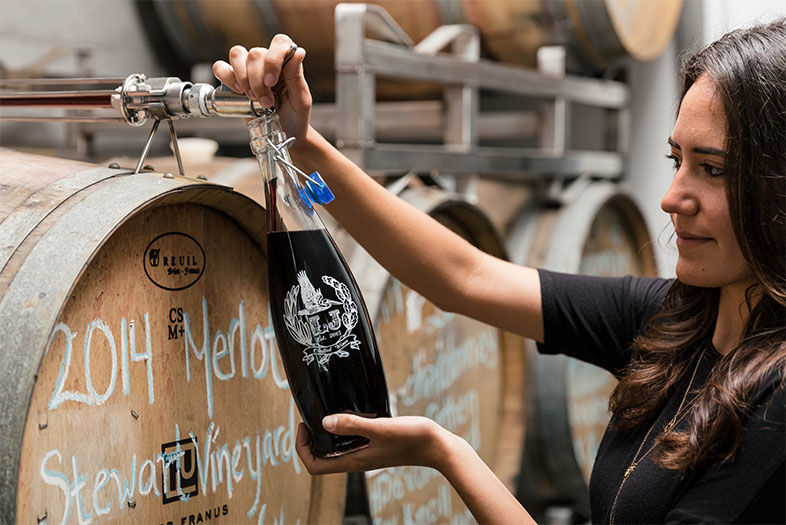
A Wine Game-Changer?
Bird Rock’s LJ Crafted Wines serves high-end wines straight from the barrel. | Photo: Justin Galloway
